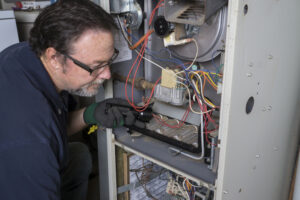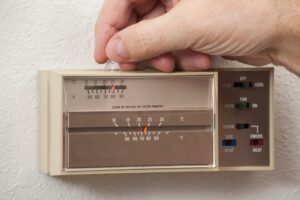Have You Considered a Heat Recovery Ventilator?
Opening your windows and doors is probably not a good idea for ventilating your home during the chilly months of an Illinois winter. While it’s easy to recognize that there would be a big impact on your home’s temperature and heating costs with this approach, the reality is that you really do need some of that fresh air to keep the supply in your home healthy. The tighter you seal your home, the more concentrated pollutants can become. However, a heat recovery ventilator is an excellent option for energy-efficient home ventilation.
How Does a Heat Recovery Ventilator Work?
Home ventilation can be handled in a number of ways. Opening doors and windows is great when the weather is good. Leaks and cracks can also provide this natural ventilation. The problem is the impact on your heating and cooling loads. Exhaust ventilation can be used to expel polluted air from your home, and intake ventilation is helpful for pulling in fresh air. However, balanced ventilation combines both of these principles for optimum indoor air quality.
A heat recovery ventilator is designed to operate as a balanced system, allowing contaminated air to be exhausted from a bathroom, laundry room or kitchen while moving fresh outside air into a living space. Energy is recovered from the outgoing airstream as both the intake and exhaust streams move through a common box. The energy in the outgoing air is transferred to the incoming air, preconditioning it so that there is limited impact on the indoor environment.
Both heat and energy recovery ventilators operate in a similar manner. The core of each type of unit includes a filter to remove pollutants from the incoming air. In an energy recovery ventilator, a paper core is able to remove moisture from the incoming supply as well. However, a heat recovery ventilator lacks the paper core. An HRV is more suitable to a cold climate, and an ERV is ideal for a climate that experiences more humid conditions. Homes in many regions can be equally well ventilated by either an HRV or an ERV.
Professional Installation Is a Priority
It’s important to note that your selection of a heat recovery or energy recovery ventilator should be completed with the input of an HVAC contractor. The size of your home and number of bedrooms will impact the sizing selection for your home ventilation equipment. Additionally, a professional installation is critical for safe ventilation in your home. Balancing must be executed carefully to limit the potential for dangerous issues like backdrafting. It’s also important to remember that working with a contractor will ensure that your installation is completed in compliance with local building codes. Warranties on HVAC products are usually contingent on proper, professional installation and service as well.
The technicians at Climate Master Mechanical Contractors are available to help with a variety of indoor air quality issues. We can provide an IAQ evaluation if you need to pinpoint problems with your home’s air supply. We can also provide energy-saving solutions related to your heating and cooling equipment. Our Frankfort, IL, office staff can answer your questions or schedule an appointment when you call.
You May Also Like

3 Ways Ductwork Impacts HVAC System Performance in Mokena, IL
Ductwork is critical to making any central HVAC system work efficiently. Here are three ways your ductwork influences the performance of the… Continue Reading 3 Ways Ductwork Impacts HVAC System Performance in Mokena, IL…

3 Furnace Odors and What They Mean in New Lenox, IL
When you first turn on a brand-new furnace, you might expect a few mild odors to appear as the system establishes itself.… Continue Reading 3 Furnace Odors and What They Mean in New Lenox, IL…

Do I Need to Replace My Old HVAC Thermostat in Mokena, IL?
A thermostat is like the brain of your HVAC system. If it doesn’t function properly, no part of the HVAC system in… Continue Reading Do I Need to Replace My Old HVAC Thermostat in Mokena, IL?…
